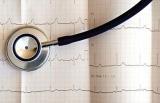Health Topics
-
Healthy Living
-
|
| Newer Treatment for Diabetes
|
| Dr Ambrish Mithal
|
| |
 |
Diabetes is a chronic disease, which resists cure, but now there are many new treatments which have gone a long way in diabetes management. |
|
Byetta (Exenatide)
Byetta is the first in a new class of drugs for the treatment of type 2 diabetes called incretin mimetics. It was originally derived from the saliva of the giant lizard (Gila monster).
Byetta stimulates the body’s ability to produce insulin in response to elevated levels of blood sugar, inhibits the release of a hormone called glucagon following meals, and slows the rate at which nutrients are absorbed into the bloodstream, reducing food intake. Byetta improves blood sugar control by lowering both post-meal and fasting glucose levels, leading to better long-term control. It is given as an injection twice a day. An added advantage of Byetta is helpful for weight loss. It can produce nausea/vomiting, which is usually transient.
Liraglutide
Liraglutide is a new injectable drug to be launched for patients with type 2 diabetes. It falls in the same league as Byetta. It reduces meal related rise in sugar (for 12 hours after administration) by increasing insulin secretion, delaying gastric emptying, and suppressing prandial glucagon secretion. Liraglutide, like Byetta, may have advantages over current therapies. For example, it will stimulate insulin secretion only when blood glucose levels are higher than normal. Consequently, it shows negligible risk of low blood sugar. It also decreases appetite and maintains body weight.
Januvia (Sitagliptin) and galvus (vildagliptin)
Januvia and Galvus are oral ‘incretin enhancers’. They are used to treat patients with type 2 diabetes. They work by inhibiting an enzyme called DPP-4. This leads to an increase in incretin or insulin-secreting hormones. Their major advantage is they do not produce low blood sugar reactions and overall side effects are rare. They have, therefore, gained rapidly in popularity.
Insulin pumps
An insulin pump is a small computerized device that delivers small amounts of insulin constantly under the skin through a small plastic tube. The pump is programmed to give small background doses of insulin (basal insulin) continuously throughout the day and night, depending on the individual’s needs. Each time the person eats, they activate the pump to give a burst of insulin (or bolus) to cover the amount of carbohydrate that they are going to eat. An extra bolus can also be given to treat a high blood glucose level. This way, the insulin pump simulates more closely the way a healthy pancreas would deliver insulin. Pumps are recommended for Type 1 (juvenile, insulin dependent diabetes). They provide greater flexibility in lifestyle, with improved sugar control.
Buccal Sprays (oral Recosulin)
These sprays can be used by people who have a phobia of needles. Such patients can take solace in oral insulin. Insulin administered via the buccal spray formulation is as effective as the subcutaneous route in lowering blood glucose levels, but can only be used in place of short acting insulin. One puff delivered acts as just one unit of insulin. So, several puffs are required before each meal. |
 |
Dr Ambrish Mithal is Senior Consultant Endocrinologist, Indraprastha Apollo Hospitals, New Delhi |
|
|